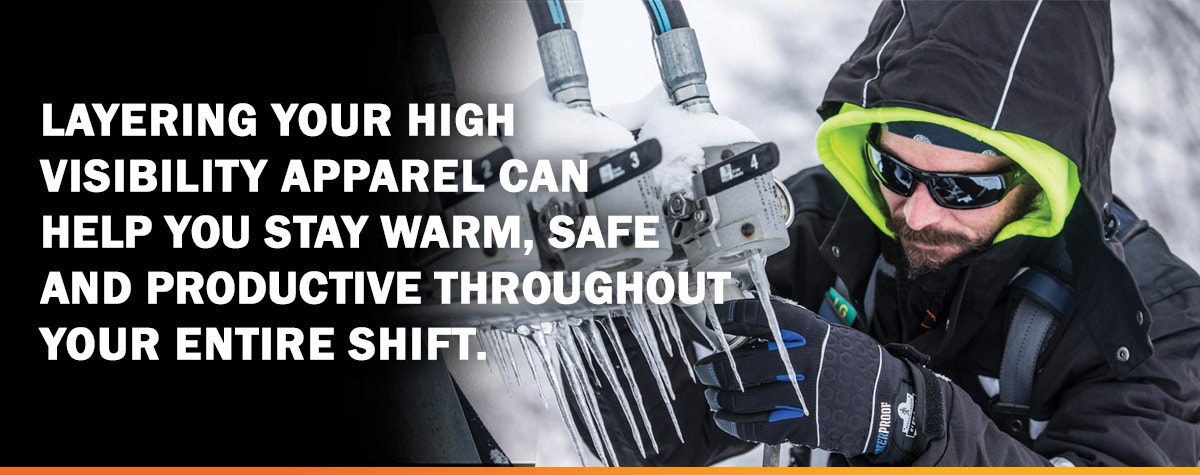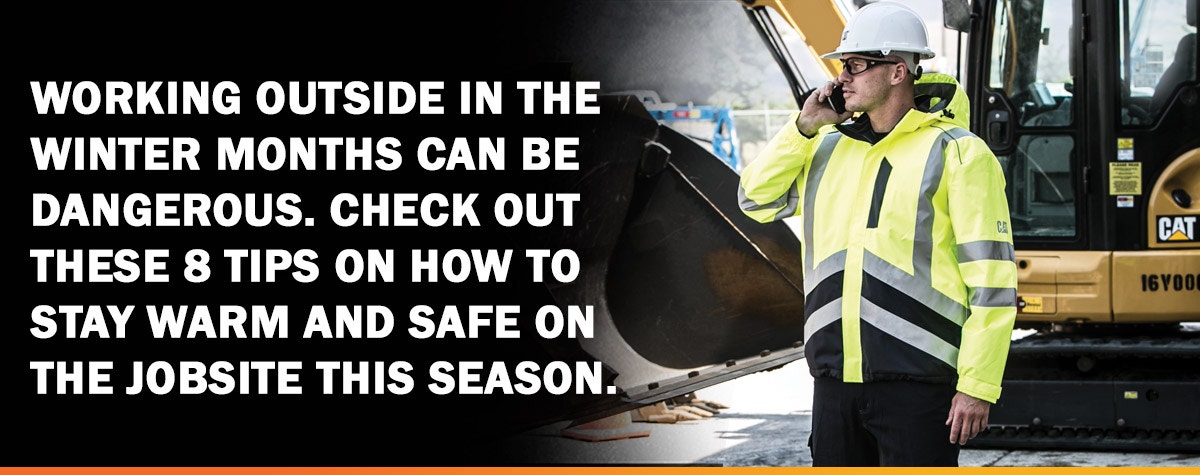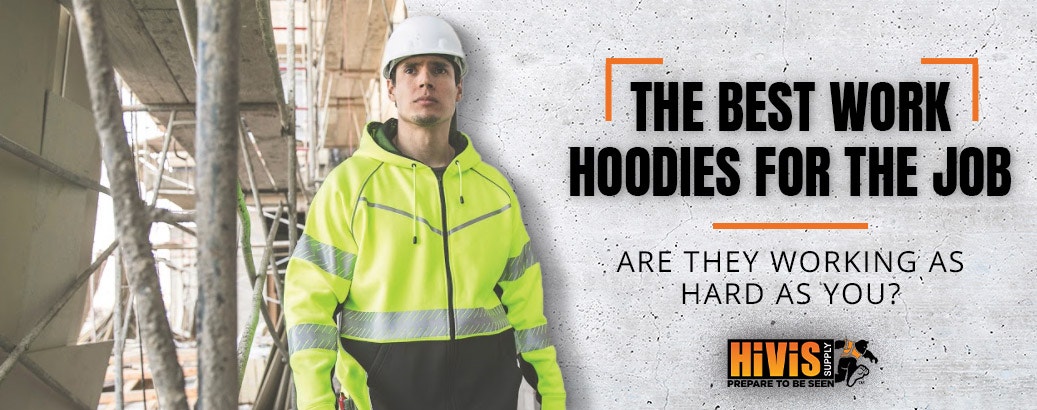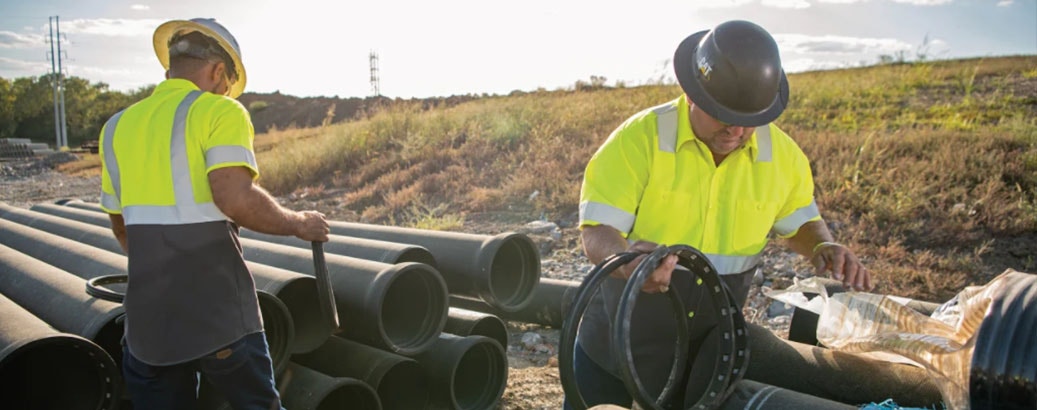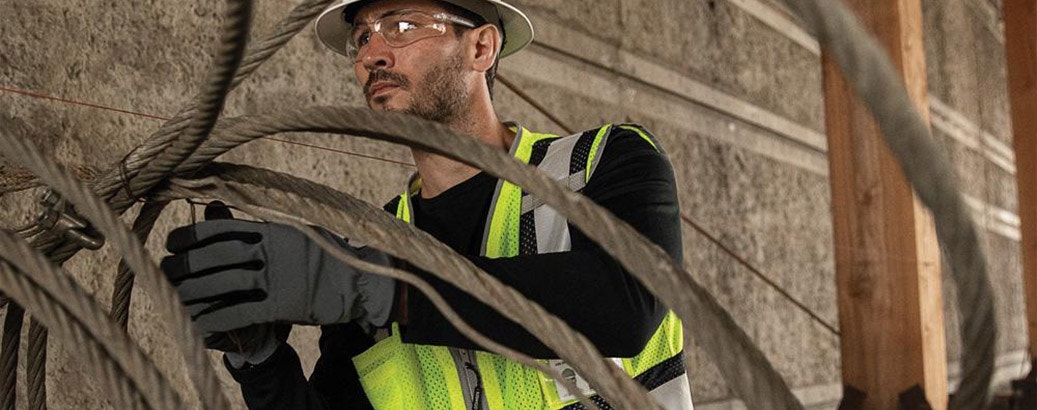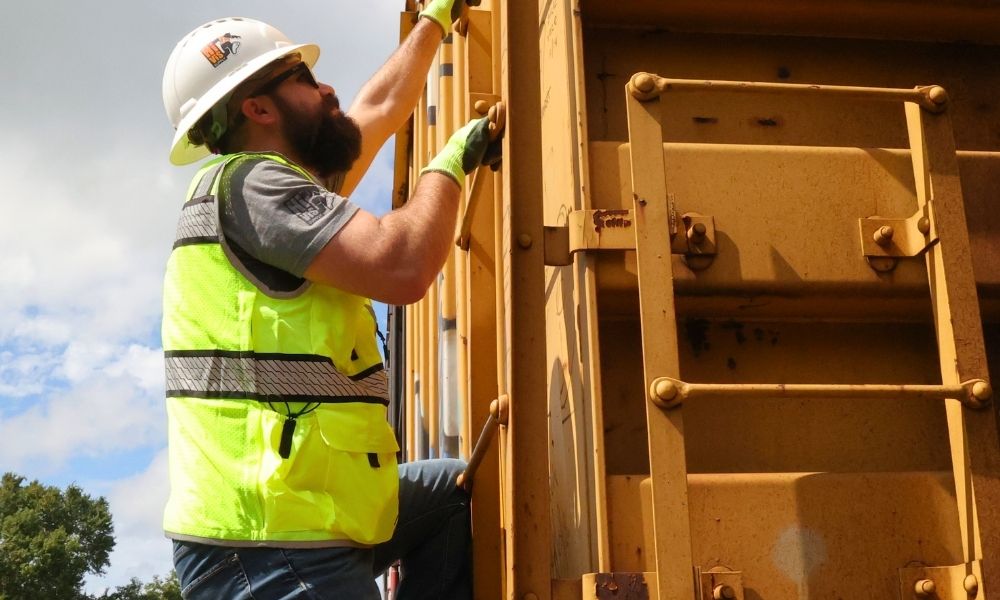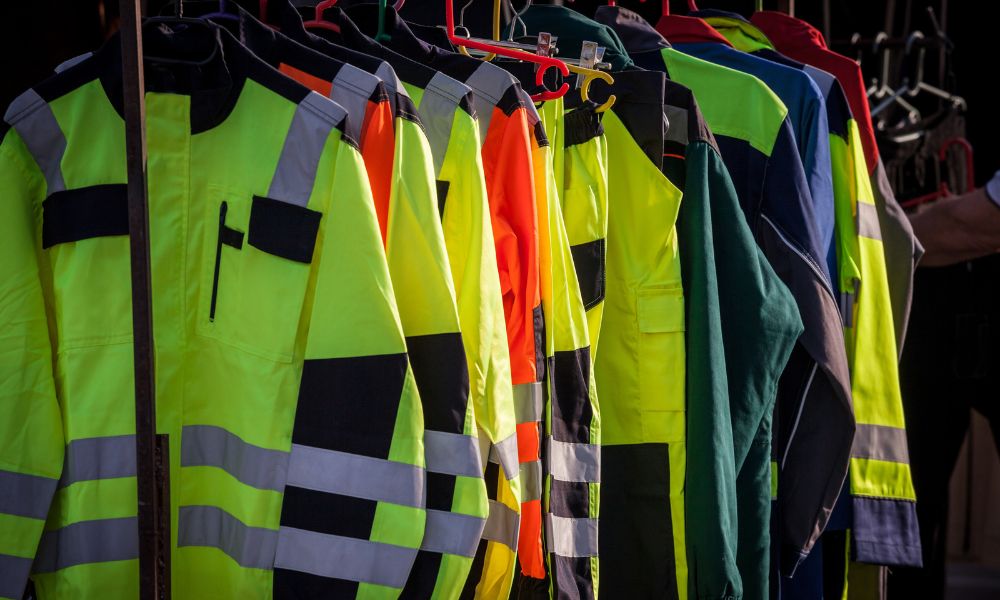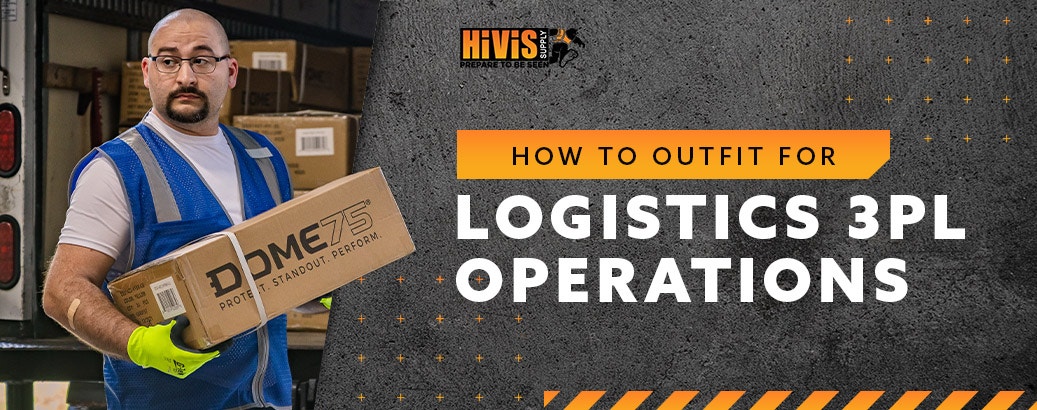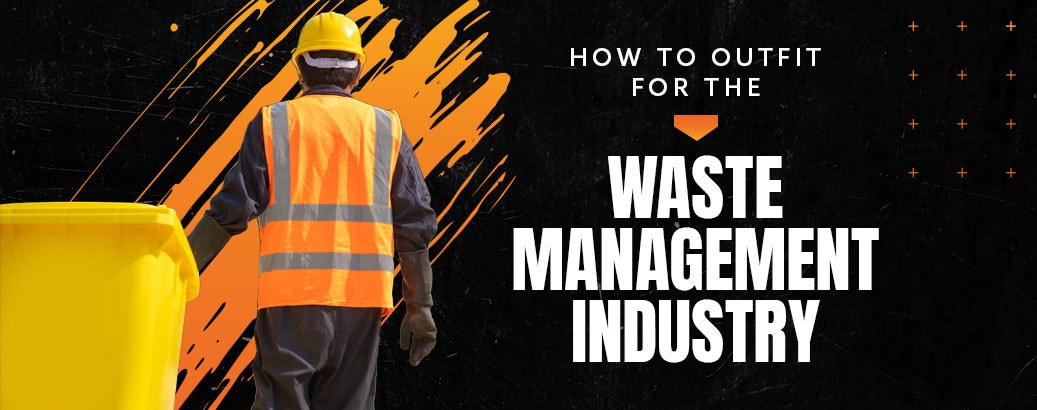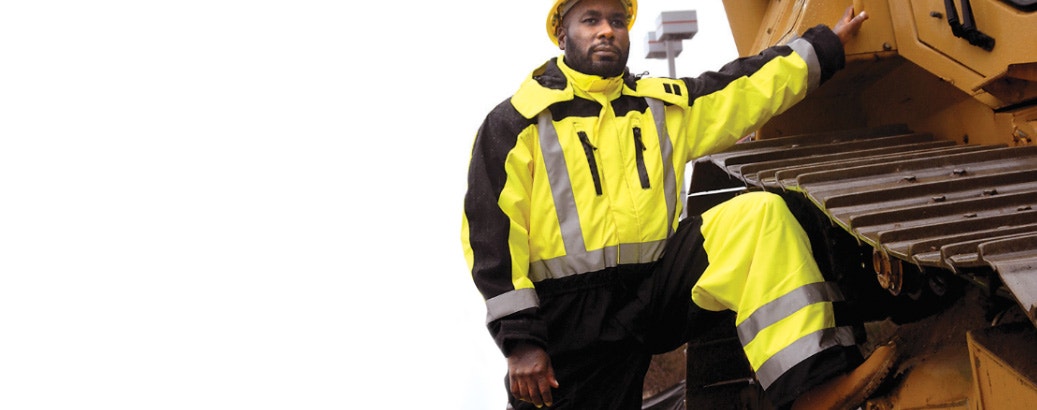High Visibility Clothing: The Secret to Staying Comfortable and Alive
- By HiVis Supply
- Oct 15, 2019
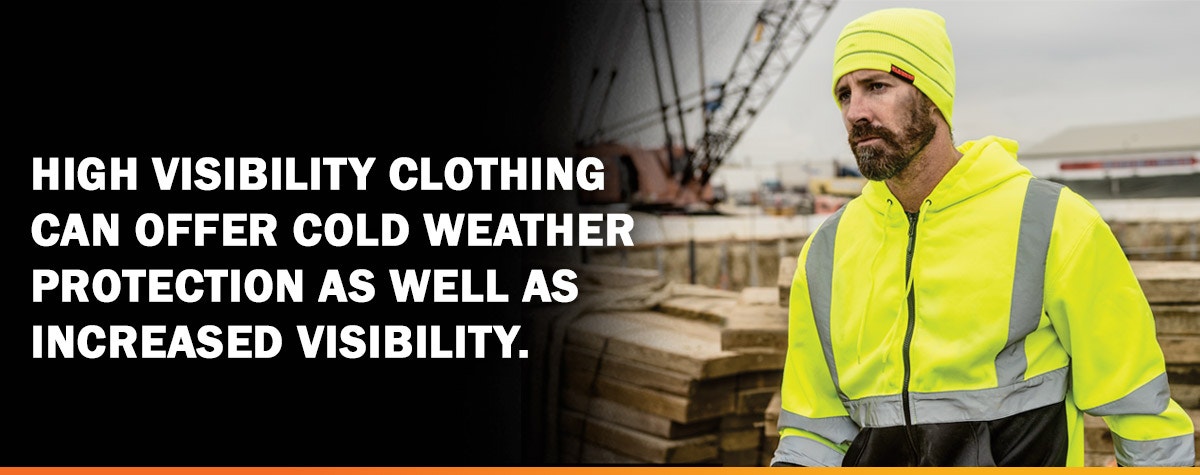
If you’ve ever used your license to scrape ice off of your windshield, you know exactly what it’s like to be unprepared for the cold winter months. Your fingertips quickly become frozen, your gloves are soaking wet and your license just snapped in half. This looks like the start of a great day and it isn’t even 7 o’clock in the morning.
Sometimes preparation is as easy as simply keeping an ice scraper in your glovebox or installing a remote car starter. Sometimes being prepared isn’t quite as cut and dry however, as is the case when choosing the right outdoor work apparel. For a variety of outdoor jobs, you may get away with a warm jacket, some waterproof boots and a pair of gloves. When you’re working in traffic areas, low-light situations or in complex backgrounds, you’ll need more specialized winter gear like high visibility clothing for cold weather.
For a look at common cold weather hazards and how to avoid them, take a look at our blog: HiVis Supply’s Cold Weather Guide to Cold Stress Prevention
Cold, wintry conditions can be extremely dangerous without the proper protection. It’s not just freezing temperatures or wet weather that’s a problem. Wind speeds in moderate temperatures can increase the risk of cold stress in outdoor workers. Many workers overlook just how cold it can get after you factor in windchill.
Just take a look at the National Weather Service Windchill Chart below and see for yourself. With wind gusts of 25 mph, your 40°F day can produce blistering windchill of 29°F and put you directly in harm’s way. But you can stay safe and visible. Keep reading to learn more.
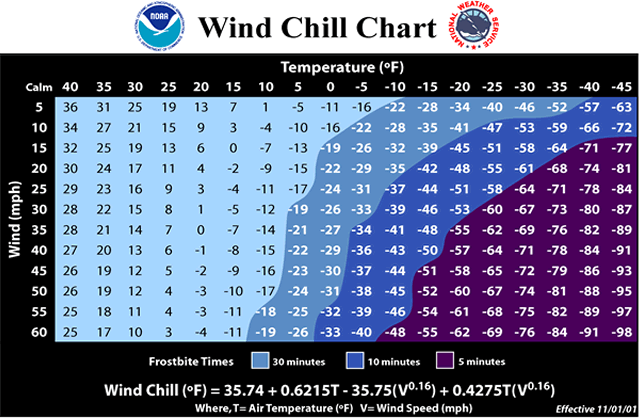

How Can High Visibility Clothing Keep You Safe and Warm?
So, you think high visibility clothing is limited to a flimsy bright vest or jacket. What if we told you that you can stay warm on the job and stay visible at the same time? That’s where the folks here at HiVis Supply shine. We take into account the work you do, the risk factors and the environment and help you choose a high visibility garment that can help you get the job done.
High visibility protection is available in: High visibility vests, shirts, pants, jackets, sweatshirts, headwear, gloves, rain gear and overalls.
There are hi vis options out there that are specially designed to be lightweight, resist moisture, wick away sweat and keep you warm. Protection doesn’t stop there. Your high visibility gear should be designed with your specific occupational hazards in mind. That means your hi vis gear should not only factor in increasing job site visibility, but also cold weather protection, flame-resistance, arc flash or protection from chemical exposure if needed.
You may need different levels of protection, depending on your work conditions. For instance, you may only need a sweatshirt and hi vis vest when operating climate controlled equipment. If you are digging ditch, you may need layers of protection. Check out our three tips on how to safely layer your protective clothing below.
- Start with Base Layer to Stay Dry
- Add Intermediate Layer or Sweatshirt to Insulate
- Use Outer Layers for Weather Defense
For even more information on how to layer your cold weather gear, read 3 Steps to Layer High Visibility Clothing & Maximize Safety.
Comfort Matters. Choosing your winter workwear isn’t all about function. Fit and comfort are just as important as matching your gear to occupational hazards. Ill-fitting garments will bunch up and make it difficult to perform tasks. Not only that, but workers often choose to forego wearing uncomfortable garments altogether — putting them at increased risk of injury. Today’s high visibility clothing is designed to fit a variety of body types, including small frames for improved mobility and comfort. High visibility apparel is even stylish now, check out this Class 3 Hoodie from ML Kishigo.
HiVis Hank doesn’t have to worry about staying warm and dry, his fur has built-in climate control. He does have ten cold weather tips for his non-furry friends:
- Pay attention to the weather forecast
- Learn the signs of cold-related illnesses (trench foot, hypothermia and frostbite)
- Regularly train on best practices to avoid cold stress
- Wear the proper clothing for cold, wet conditions
- Take frequent breaks to warm up
- Try to work during the warmest part of the day
- Use the buddy system to spot danger signs
- Eat warm, high-calorie food and drink warm beverages
- Avoid caffeine and alcohol
- Take health conditions into consideration
Your work can be tough and grueling, but thanks to innovations in today’s protective clothing, you don’t have to suffer. There’s protective apparel and PPE designed to keep you warm, comfortable and safe through the winter months. If you find yourself needing help choosing the best high visibility clothing for your job, just click here to get in touch with one of our hivis specialists!
“Prepare To Be Seen”


